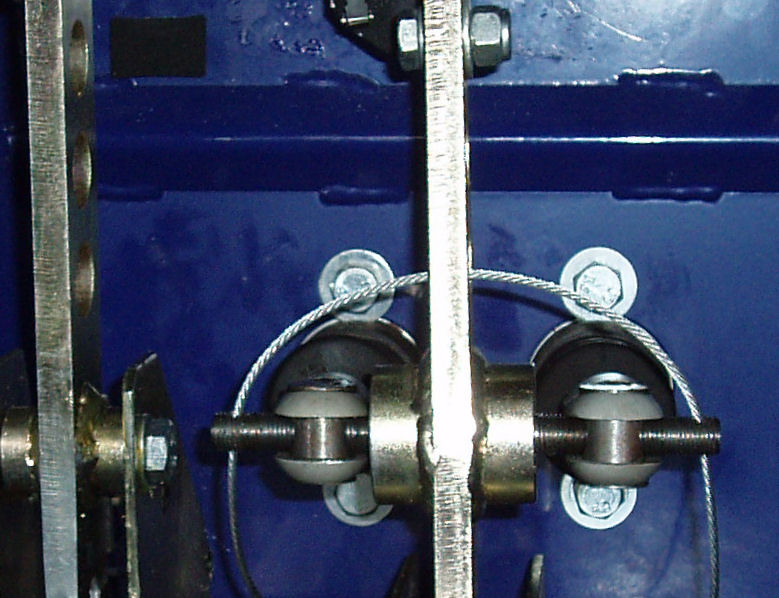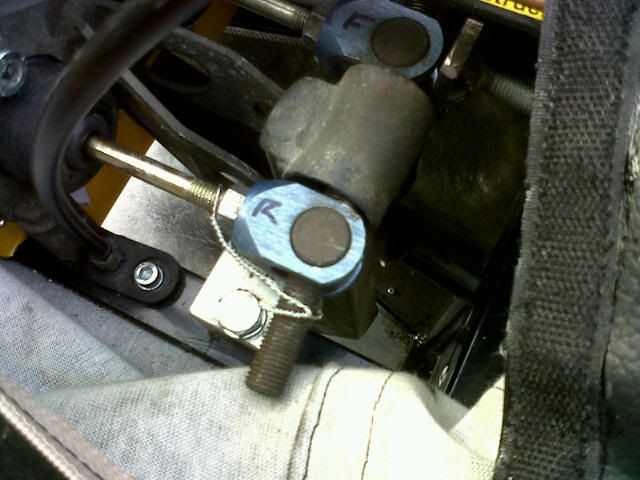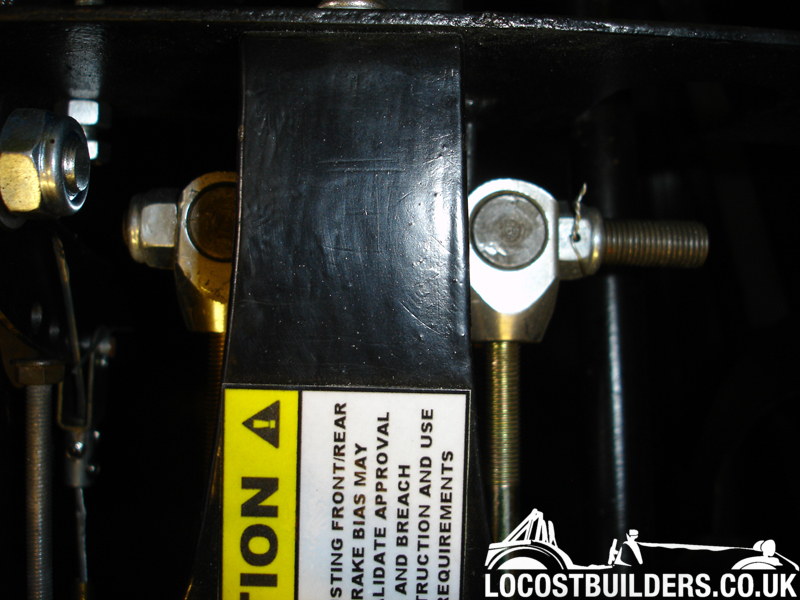


just been reading this and was wondering how you have done it ? ...........pics would be helpful
Note 5: Bias bars and other mechanical adjusting devices fitted to twin master cylinders must be rendered inoperable by mechanical means
Google image search revealed these 2 options:


thanks 
nylocs with locking wire..

have you got the lock wire wrapped around something else like on the 2nd pic ?
quote:
Originally posted by tcr
have you got the lock wire wrapped around something else like on the 2nd pic ?
i welded a bit of studding to a nut and screwed the nut onto the end of the bias bar. Did this both ends. It looked like the nuts were welded to the bar. They accidently unscrewed and fell off after the test.
quote:
Originally posted by Lightning
i welded a bit of studding to a nut and screwed the nut onto the end of the bias bar. Did this both ends. It looked like the nuts were welded to the bar. They accidently unscrewed and fell off after the test.

ha ha there's a possibility that might happen to mine too
quote:
Originally posted by Lightning
i welded a bit of studding to a nut and screwed the nut onto the end of the bias bar. Did this both ends. It looked like the nuts were welded to the bar. They accidently unscrewed and fell off after the test.



interesting ideas!
i like the one with the wire rope thing looped round. might use that one myself. problem with my nbias bar is there's no access to it once its in
for drilling the nuts, or welding,
2 holes drilled in the ends of the bar, wire rope through, and looped around the pedal (checking it won't catch anything) might be the best way
for me! it will allow movement, but less that a quarter turn really.
screwing studding on the end, erm, clever, but dangerous if you get caught! lol
this one is the one i like

here's a question though, what is it they're actually checking it for? is it to stop people adjusting it and doing it wrong? in which case
any locking efforts can be undone easily
or to stop the bar screwing itself in and out under vibration? in which case, surely 2 nyloc nuts would do? or some sort of split pins or something
[Edited on 9/7/12 by blakep82]
As I understand it, the locking doesn't have to be perminent anymore (had to be welded when IVA first introduced). Now just has to prevent it moving accidentaly and have the correctly worded sticker to say not to adjust.
who sells the warning decal?
Would a nyloc nut at either end do the trick? They'd be nigh on impossible to remove without tools.
[Edited on 9/7/12 by JekRankin]
quote:
Originally posted by JekRankin
Would a nyloc nut at either end do the trick? They'd be nigh on impossible to remove without tools.
[Edited on 9/7/12 by JekRankin]
quote:
Originally posted by loggyboy
quote:
Originally posted by JekRankin
Would a nyloc nut at either end do the trick? They'd be nigh on impossible to remove without tools.
[Edited on 9/7/12 by JekRankin]
No, the intention is to stop people from adjusting them, not to stop them from coming 'loose'.
yes, it is a bit of a strange rule, but i believe they intend it to discourage adjustment, more for possible future owners. they know people are going to remove them, otherwise they would have kept the welding rule. I suspect its a lot of back covering and box ticking.
In the end I decided to drill and roll pin mine because that seems to be the accepted solution for IVA. I still think the use of Nylocs might be better in some respects, because it still prevents anyone from casually adjusting it without tools, but doesn't require holes to be drilled in the bias bar.
I spoke to the IVA tester before tackling my bias bar. He was of the view that he expected to see locknuts with roll pins plus a warning label. So that's what I did and he was happy.